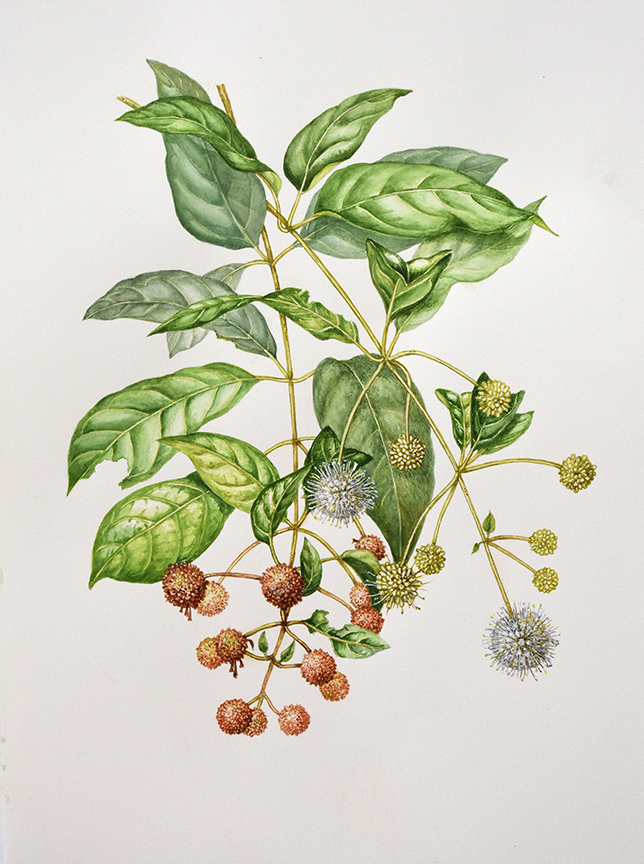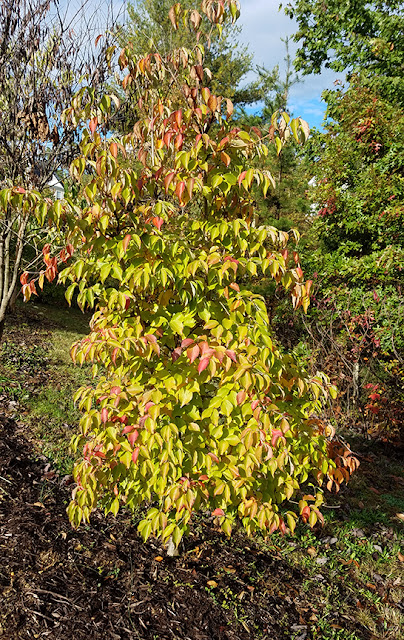 |
| Buttonbush (Cephalanthus occidentalis), watercolor, 14"h x 10"w. |
Here's my illustration of the Virginia Native Plant Society (VNPS) Plant of the Year for 2022--its common name is Buttonbush, the botanical name Cephalantus occidentalis. It's a shrub that can reach eight to ten feet in height and equal width, which loves wetlands. The "buttons" are actually clusters of tiny flowers arranged in a ball around. After the corollas and pistils fall, they leave behind seed pods which turn a reddish color and release their seeds in the fall. Many birds love to eat the seeds.
It took many steps to achieve the final illustration you see above. I first sketched a flowering branch in my studio from material I collected in the field--it was much too hot to sketch outdoors for any length of time during the summer doldrums of July.
 |
| First pencil sketch, 10"h x 8"w |
I waited until mid September to visit the plants again when they were setting seed--the seed pods turn a reddish brown color as they ripen, and I wanted to include this stage in my painting. At this time, the weather was a bit more conducive to outdoor sketching, so my next sketch was done on site on a very small sketchbook (my photo of it is awful, apologies).
 |
| Buttonbush seed pod sketch, 7"h x 5"w |
Next I had to figure out how to combine the two sketches to create a composition that would show both stages. The problem was that the sketches were of different sizes--to save time I scanned both sketches, increasing the size of the seed pod sketch and decreasing somewhat the size of the sketch of the flowers and buds, until I had both drawings at similar size. Then I combined the sketches, making some corrections, and inked the drawing for tracing.
 |
| Ink drawing for tracing. |
After tracing my drawing onto the watercolor paper, I was ready to start painting. I started with the flowers and buds, added a few leaves, then put some color on the seed pods and more leaves. As usual, I forgot to take more early and in-between photos of my progress, but here is what I managed to document.
 |
| Buttonbush - stage 1 |
 |
| Buttonbush - stage 2 |
 |
| Buttonbush - stage 3 |
I'm looking forward to seeing the brochure that will be published by VNPS with my illustration and our botanist's remarks.












































